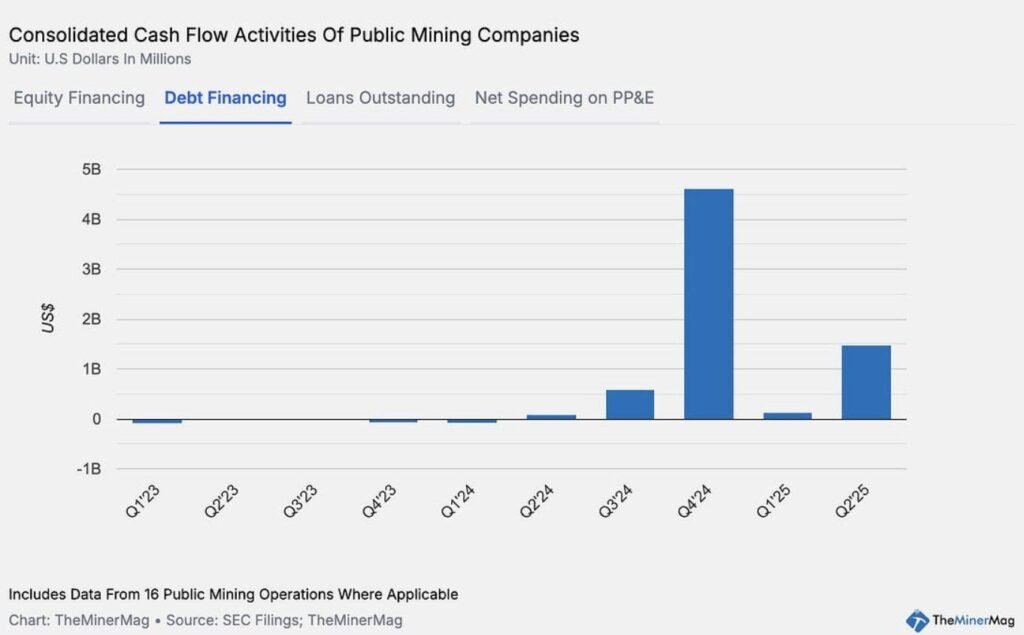Are Public Mining Companies Overleveraging to Stay Competitive?
In the ever-competitive and capital-intensive mining industry, companies are faced with the challenge of balancing operational costs, capital expansion, and financial health. The recent trend shows a significant number of public mining companies potentially overleveraging in an effort to stay competitive. But is this approach sustainable?
The Current Landscape
The global demand for minerals and metals is on the rise, fueled by developments in technology, green energy projects, and urbanization, especially in emerging economies. To meet this growing demand, mining companies need substantial capital to invest in new projects, expand existing ones, and adopt innovative technologies.
This required capital is enormous, often running into billions of dollars for a single project. Public mining companies, therefore, resort to various financing options, one of the most common being leveraging through debt. This approach can provide the necessary capital for expansion but also increases financial risk.
Overleveraging: A Closer Look
Overleveraging happens when a company takes on more debt than it can handle. For mining companies, this risk is exacerbated by several industry-specific factors:
Volatility of Commodity Prices: Mining sector revenues are closely tied to commodity prices, which can be highly volatile. A sudden drop in prices can significantly affect a company’s ability to service its debt.
Regulatory and Environmental Challenges: Mining operations are subject to strict environmental and regulatory policies, which can lead to unexpected costs or project delays.
- Operational Risks and Geopolitical Concerns: Mining in remote or politically unstable regions can add to costs and risks, impacting overall financial stability.
Case Studies and Data
Recent financial data from leading public mining companies reveals a mixed picture. Many companies have indeed ramped up their debt levels. For instance, a 2021 report highlighted that some of the top public mining companies increased their total debt by over 50% in the past five years as part of their strategy to fund large-scale expansion projects and modernize their operations.
On the flip side, some of these companies have managed to maintain a manageable debt-to-equity ratio, thanks to robust earnings driven by high commodity prices. However, this balance could be disrupted if commodity prices fall or if operational costs rise unexpectedly.
Industry Experts’ Opinion
Experts in the mining industry express concerns over the sustainability of high leverage ratios. According to several financial analysts specializing in the mining sector, the profitability of highly leveraged mining companies can be severely impacted during periods of economic downturn when commodity prices fall.
Moreover, overleveraged companies may find it difficult to secure further funding or may have to do so at higher interest rates, compounding their financial woes. The key to sustainability, as per industry veterans, lies in moderate leveraging coupled with a strong focus on operational efficiency and cost management.
Looking Ahead: Strategies for Sustainability
For public mining companies considering leveraging as a strategy, the following approaches could ensure better sustainability:
Diversification: Diversifying operations and investments can help spread risk and stabilize income. This can include diversifying into different minerals or geographies.
Technology Investment: Investing in technology can enhance operational efficiency and reduce costs, thereby improving the ability to manage debt even during downturns.
Robust Risk Management: Implementing a robust risk management framework can help anticipate and mitigate financial and operational risks associated with overleveraging.
- Flexible Financing Structures: Exploring alternative financing options such as joint ventures, partnerships, or royalty agreements can reduce reliance on debt.
Conclusion
While leveraging can provide mining companies with the capital necessary for critical growth and expansion, overleveraging may pose significant risks, especially in a sector as volatile as mining. Balancing ambitious growth strategies with prudent financial practices will be key to maintaining competitiveness without compromising financial stability. As the sector moves forward, adopting innovative and diversified strategies might be the optimal path for mining companies aiming to capitalize on opportunities while managing potential pitfalls.



